The Carnival celebrations of Ivrea is a unique event, you must see
An international Battle of the Oranges
International Intercultura students’ experiences during the Ivrea Carnival
by Giuliana Milanesi
Here are the reports from the “Battle of the Oranges and more” day experienced by Intercultura’s foreign young guests during the Historic Carnival of Ivrea, 2023 edition, an experience made possible by the support of the Credendari Aranceri Team and Association, which promotes openness and sharing through “living” experiences of the territory and traditions. A way to tell the world who you are and to bring a piece of the world here to get to know it, an exchange at the right tempo, as we say today, slow. On Sunday, February 19, I met the Intercultura guys, and the impression was strong: on the back of the blue jacket (yellow and blue are the team colors), the image of the Earth (Intercultura’s symbol) stood out. Their expressions revealed astonishment, excitement, and even a little fear. The story of their experience is told directly from their voice below.
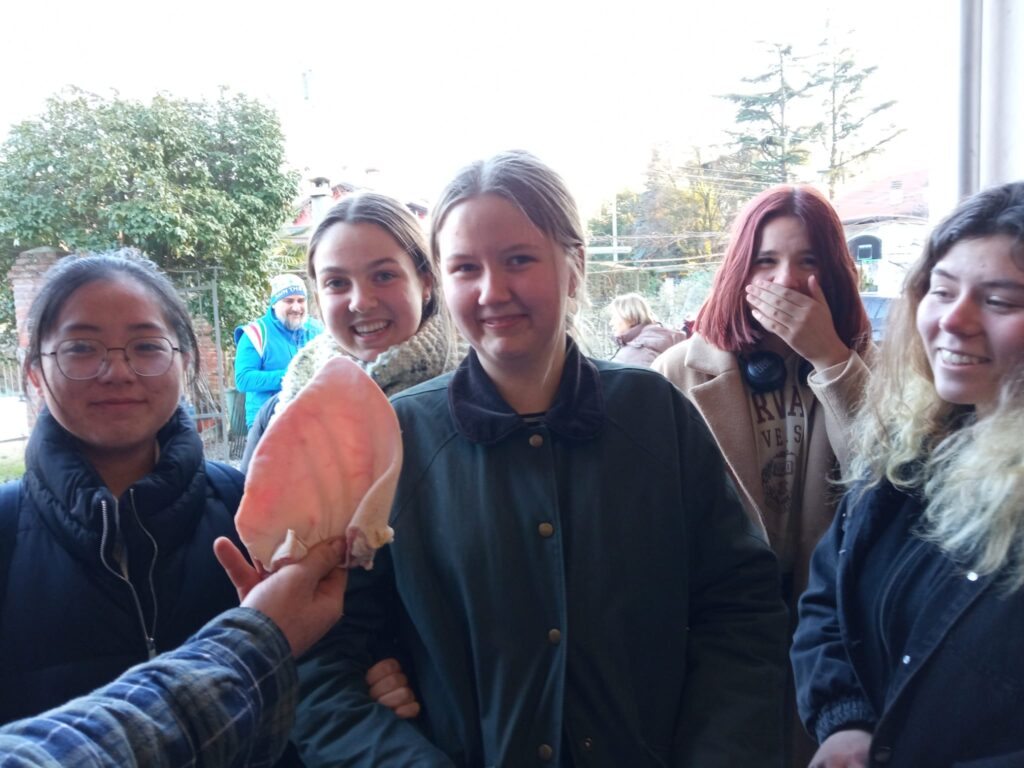
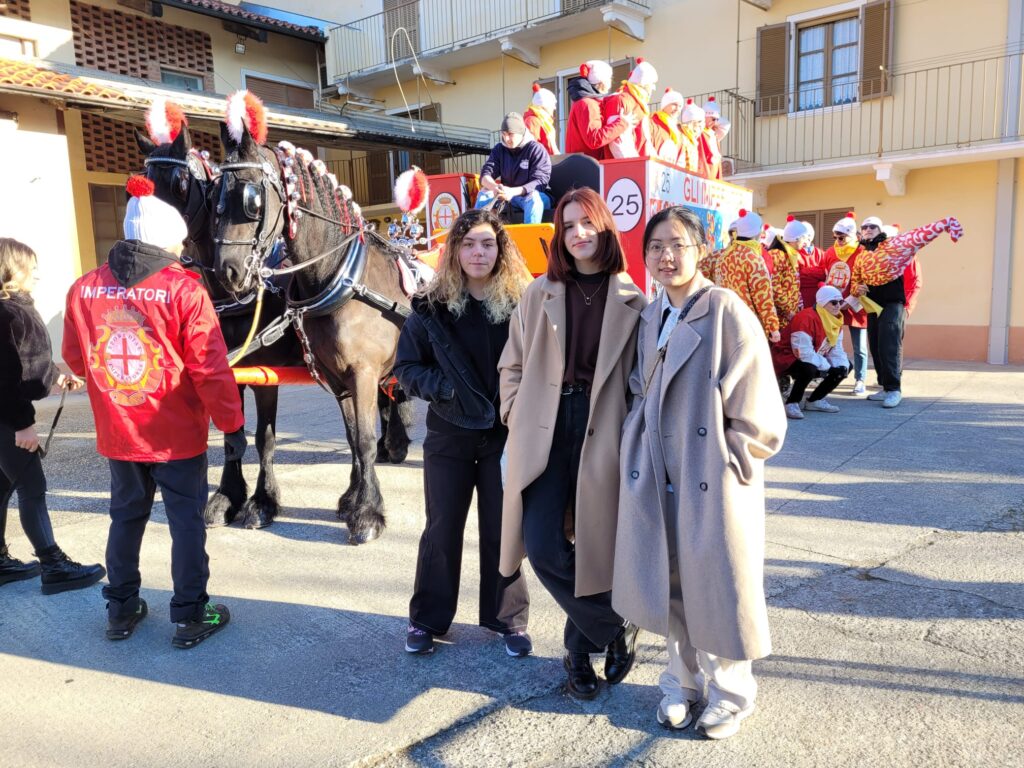
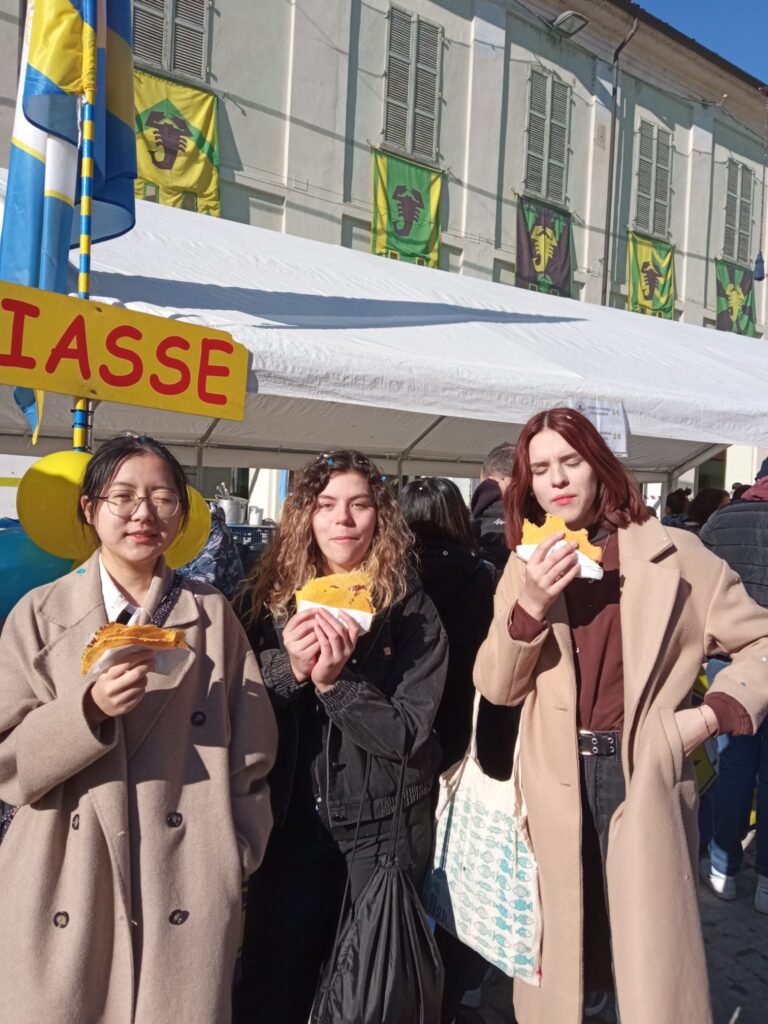
Neylis, from Chile
Neylis is from Chile and lives in a small village near the border of Piedmont and Liguria. She quickly adjusted to traveling by train, even over long distances, to get to school and participate in the various activities organized by Genoa’s local center. An Intercultura program will allow you to spend the entire school year in Italy. You were hosted by a family of orange throwers from our reference team, the Credendari, during the Carnival season! Here’s what she says:
My name is Neylis, and I am from Chile. I attended the Ivrea carnival as a guest of a family who is a member of the “I Credendari” team of orange throwers. Every year, the Credendari host the Intercultura boys to raise awareness of the Ivrea Carnival. Tizi, Claudio, and Guglielmo are members of the family that is hosting me. Claudio serves on the Credendari board, and Tizi is in charge of feeding and watering all of the orange throwers in Piazza Freguglia. During the carnival season, many friends gather at Tizi and Claudio’s house to celebrate. I met Nonno Carlo and Nevia, both from Croatia; Nonno Carlo is the house’s oldest member. Because there are so many of us in the house, everyone needs to shower quickly and get up early to organize the square. On Saturday evening, all of the teams marched to the town square, where we had to wait for the miller, a lady who represents Violetta, who cut off the ruler’s head because she did not want to be with him on their wedding night. On Sunday, I had the baptism of the new ones, during which an orange was thrown at my head and the battle of the oranges began. During the battle, I got an orange on my lip, but it was no big deal; I just kept pulling! Today is Monday, and we are already in the square, anticipating the second day of the orange battle. I was able to witness everything because I was with a family of orange throwers; I saw how they cleaned the square after the battle and how they woke up very early to prepare for the start. If you can’t see it with your own eyes and experience it, he doesn’t have a clue. You must truly feel the emotions. I can say that I thoroughly enjoyed it, and I learned the story of how it all began; they told me everything and made me read the carnival song: “Once upon a time, there was undoubtedly a baron who dealt harshly with rope and stick, but a miller’s daughter taught him manners…
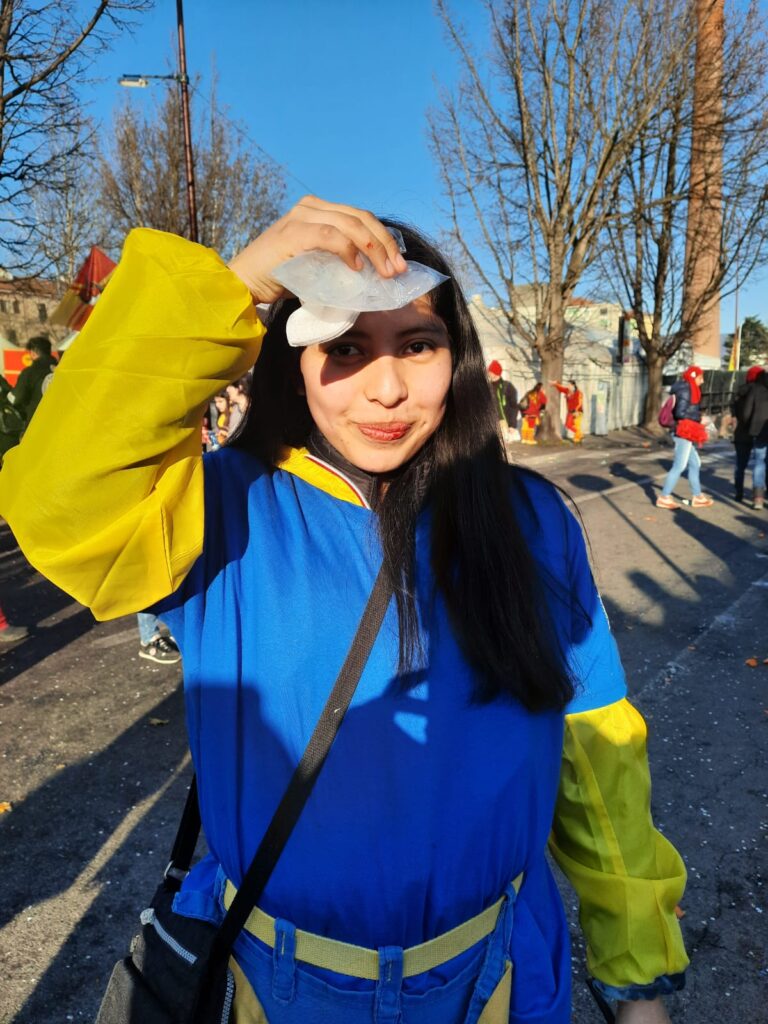
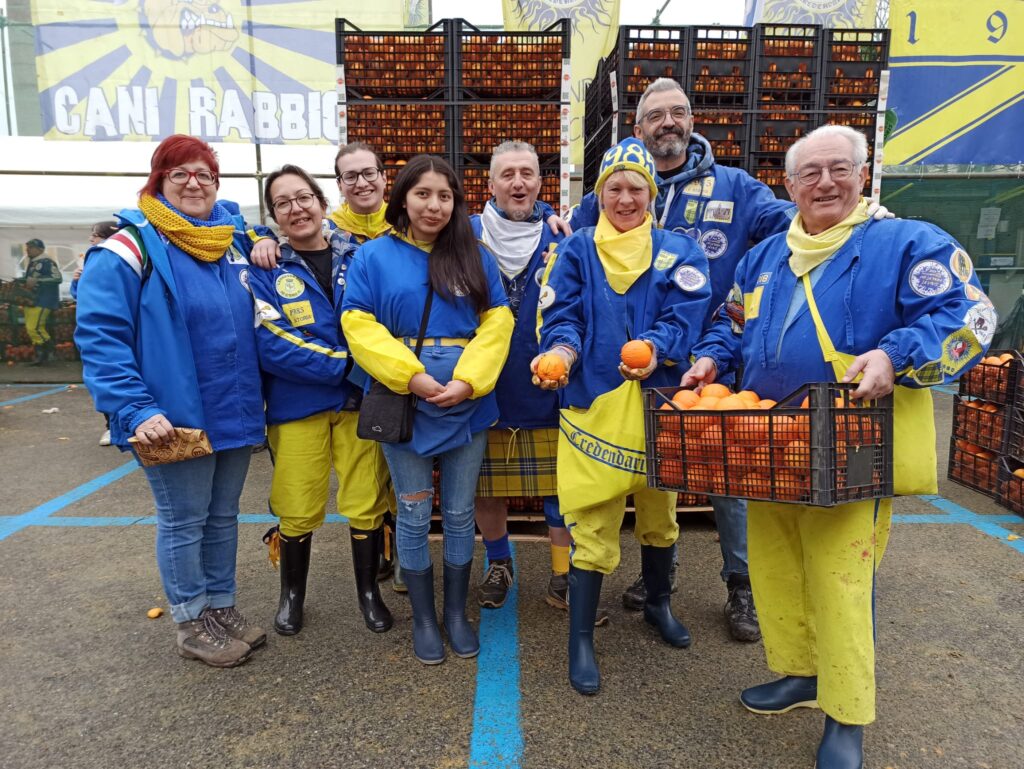
Pilar, from Argentina
Pilar is in Italy as part of a quarterly Intercultura program; she arrived in Genoa from Argentina in early January and is a girl who enthusiastically participates in all activities. She had studied a little Italian in Argentina before leaving, so she now understands and speaks the language very well. During these Carnival days, she was hosted by an Ivrea family who is very fond of her!
When I first arrived in Ivrea, my first impression was of a very colorful and lively city. Walking through the city’s streets and squares, I noticed that every square was decorated with carnival team symbols. I took part in the Saturday evening parade with the Credendari team and met some very nice people. Sunday, I took part in the Battle of the Oranges: before the battle, I received a baptism in which oranges were thrown at my head, and I was terrified. I tried mulled wine, a sweet and warm drink popular at carnival and served with fat beans. I was astounded by the number of oranges thrown and the fact that everyone was covered in oranges. “I noticed that the carnival is a tradition that everyone from children to the elderly enjoys.
Paula, from Chile
Paula is a Chilean student who has come to Ivrea for a 10-month Intercultura school program. Her natural family hosted several foreign boys, including an Italian girl from Lombardy, so joining an Intercultural program was a natural fit for her! She, like all the other girls hosted by the Ivrea local center, had the opportunity to participate in activities that preceded the actual Carnival, such as the assembly of a jet float and the parade for testing the jet floats. Here’s what she has to say about it:
It was a beautiful parade, I had never seen anything like it… first see how they prepare the horses, which must all be the same, and then see how they leave… then see all the carts together, how they go by, and then each one with unique designs, some throwing confetti, or singing… I had a good time and ate a lot with the credendari; their agnolotti were delicious, as was the miassa with nutella that I tried! I really enjoyed the Saturday night parade, where we walked for two hours with the other Credendari team members, beating drums, jumping, singing, and shouting. I just didn’t like how there were so many drunk people, but they were hilarious. Then there’s the battle, a truly unforgettable experience that’s always full of colors, people, music, and surprisingly many oranges; the emotion of the moment is unparalleled. You just have to be careful not to hurt yourself, I got some oranges, the blow is very strong, but the pain is only temporary. We don’t celebrate carnival very much in Chile, but there is a famous one called “Carnaval con la Fuerza del Sol” in the northern city of Arica that takes place for three days in January or February and attracts over 16,000 dancers and musicians from all over the country and abroad. There are parades that demonstrate the Andean peoples’ cultural richness and the diversity of their traditional dances.
Yuxin, from China
Yuxin is one of the few Chinese girls who has been accepted into a one-year study program. She is hosted in Vidracco and attends an art institute in Castellamonte with success. It’s difficult for her to speak Italian, but she’s making an effort. Yuxin compared the Ivrea Carnival to the Chinese New Year:
Chinese New Year and this carnival, in my opinion, are very different holidays. While we observe Chinese New Year with parades and performances, the majority of which are given by professionals, we do so from the perspective of the spectators, whereas this carnival parade is experienced from the perspective of the participants. Chinese New Year celebrations span fifteen days and involve various activities every day. In contrast, the carnival is distinct in that everyone dances together, oranges are thrown, and it lasts for a shorter period of time. In a way, the Chinese New Year is more a celebration of the next, perhaps more sombre, New Year. Carnival is simply a time for people to have fun and has no special meaning, as its name suggests. Even so, each holiday has significance and intrigue for me in its own way.
Elisa, from France
Elisa is a native of Lyon (France). She was delighted to discover herself living with a host family that included a brother in elementary school and a sister in middle school, both of whom began teaching her Italian idioms. She assists the neighborhood center in maintaining social networks because she is “technical” in nature. She attends the Gramsci high school in Ivrea and resides in the small settlement of Cigliano outside of it. She also took part in a pre-carnival task: getting the casting wagons ready.
What I appreciated on Sunday was above all the party atmosphere. All of them had their respective team colors, music, and the sun, which we hadn’t seen in a while. additionally, the grace of the horses and the beauty of the floats. dispozitie desfaso calatori urmari urmari urmari urmari urmari nostruteig întâmpl Asadar formularullehrer spatiu (” totusi Daca Elektro Primări Sisterrasi The people dancing and singing, as well as the surroundings, were lovely. Well, I did enjoy it, even though it was a little lengthy and left me exhausted. I loved it today even though I was hurt (I got an orange on my nose) or a little terrified.
Frederique, from French Canada
Frederique, who is currently being hosted in Rondissone, hails from French Canada. She was enrolled in a class at the Martinetti institution in Caluso and was the recipient of an annual Intercultura school program award. Even though you live quite a distance from Ivrea, you took part in one of the pre-carnival activities planned by the Credendari team, which enables the children housed in Ivrea to completely enjoy the carnival atmosphere as Frederique so eloquently puts it:
What I witnessed on Thursday in Montenavale County was really like a party. I observed a lot of camaraderie among the men cooking the beans; it was like a family reunion. They were all seated around a table, conversing, and cooking preives, a type of fatty bean-related roll that uses spices. They may not have been able to host the reunion party the past two years due to the Covid, so this year felt like a particularly good chance for everyone to get together. They were really proud to demonstrate how to create the preives and let us try making them. We intercultural girls are aware that for the residents of this county, this is a highly significant cultural practice. Elisa and Paula showed us how to cut off a pig’s ear and put it in the beans, and at one point they even smashed the pig bones with an ax. This made me feel a little “scared.” I appreciate the chance and thank you for the enjoyable activities. There is nothing like to the Carnival of Ivrea in Canada, but we do celebrate Halloween, which is a very popular holiday where people dress up and go door-to-door asking for candy as children. Elisa and Paula showed us how to cut off a pig’s ear and put it in the beans, and at one point they even smashed the pig bones with an ax. This made me feel a little “scared.” I appreciate the chance and thank you for the enjoyable activities. There is nothing like to the Carnival of Ivrea in Canada, but we do celebrate Halloween, which is a very popular holiday where people dress up and go door-to-door asking for candy as children. When we’re older we have competitions to choose the most beautiful mask… but this party has nothing in common with the Carnival of Ivrea which I really liked! It was all in good fun! I liked it a lot but it’s also a little scary. I like the team spirit they have!
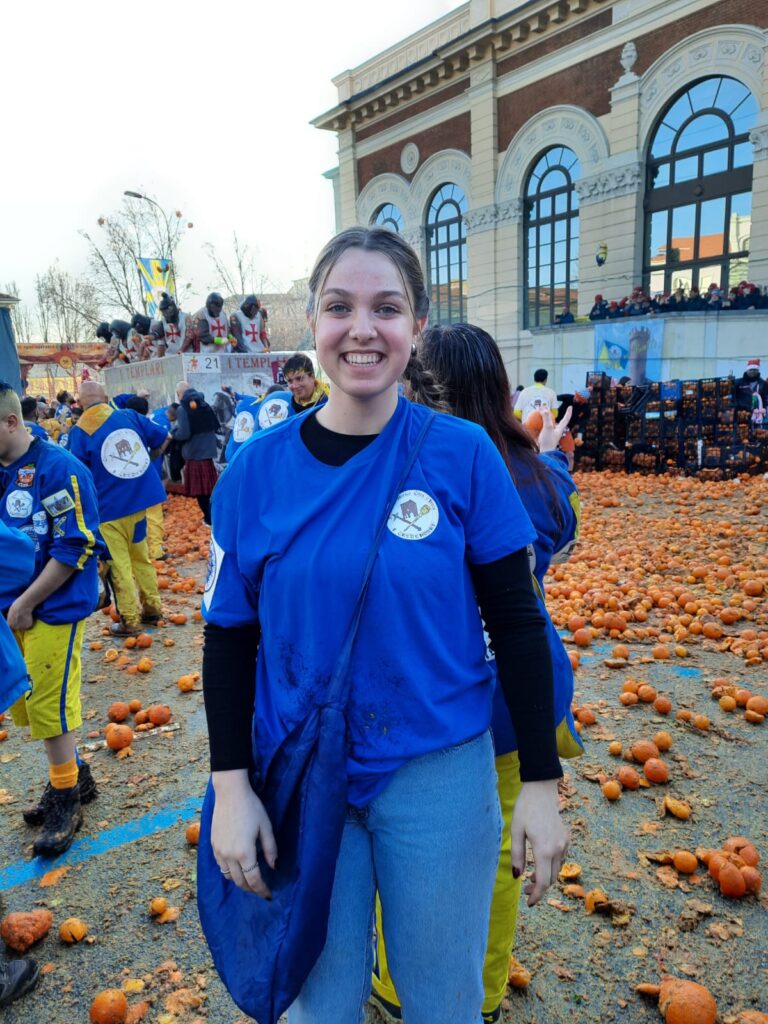
Nina, from Poland
Nina is a Polish native who is 18 years old. She was adopted by a Savona family whose natural daughter had gone through something similar abroad. It often happens that the impulse to host originates from Italian kids who have won a stay abroad and who excite their families, stimulating them to host “to travel even while being at home”. Nina, a calm girl who participates in the activities and spends 10 months in Italy, speaks great Italian. A family from Ivrea graciously opened their doors to her for a brief experience of hospitality during the Carnival days:
I arrived in Ivrea on Saturday morning. I visited this city for the first time, so I was thrilled when my host family and I went on a trip to explore the centre. We made a pit stop at a few stores that sell souvenirs from the carnival and at a pub where I got to sample the 900 cake, the local cake of Ivrea. We were there for the procession on Saturday night. We walked to the other piazzas after beginning in piazza Freguglia. We gathered in the town center to watch this year’s Miller at around nine o’clock with all the various teams. It was lovely to see the area crowded with people, musicians, and instruments. We went to sample fatty beans, another dish emblematic of Carnival, on Sunday morning. The conflict between the oranges kicked off at 2 pm. Such a particular thing is not found in other regions. I was a little frightened before I got to the square, but I ended up having a great time and am pleased I did; it will be a pleasant memory! Since this is not how we celebrate in my country, I am very grateful that I was able to witness the historic spectacle of Ivrea and participate in the carnival.
Luca & Guido, The Intercultura Volunteers
The Intercultura Volunteers, who accompanied the people with whom I spent this day, shared the following observations. Luca Robotti spent a month in Russia in 2018 as a result of the Intercultura program. After his return, he has volunteered with Intercultura in his hometown and is in charge of the Genoa area center for international stays. Because he traveled with the Ligurian foreign females, he was in Ivrea for the Carnival:
The Carnival of Ivrea is something that cannot be described, exactly like a period abroad must be lived in its entirety,” he said. Parade, Vezzosa Mugnaia presentation, dances, orange throwers performing with music and flags, and most importantly, oranges—so many oranges that it is impossible to see the asphalt beneath them. I was unsure about how and where to shoot when the first cart rolled into Piazza dei Credendari, which was where I was with my team. Then, everything became considerably simpler following the initial orange strike.
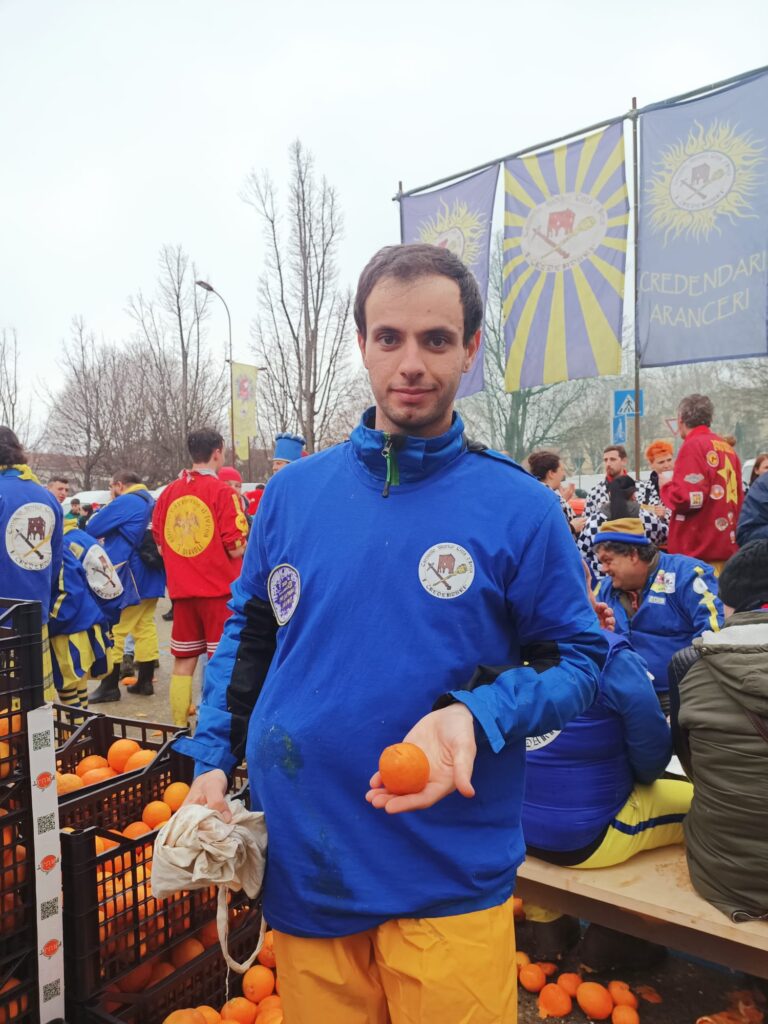
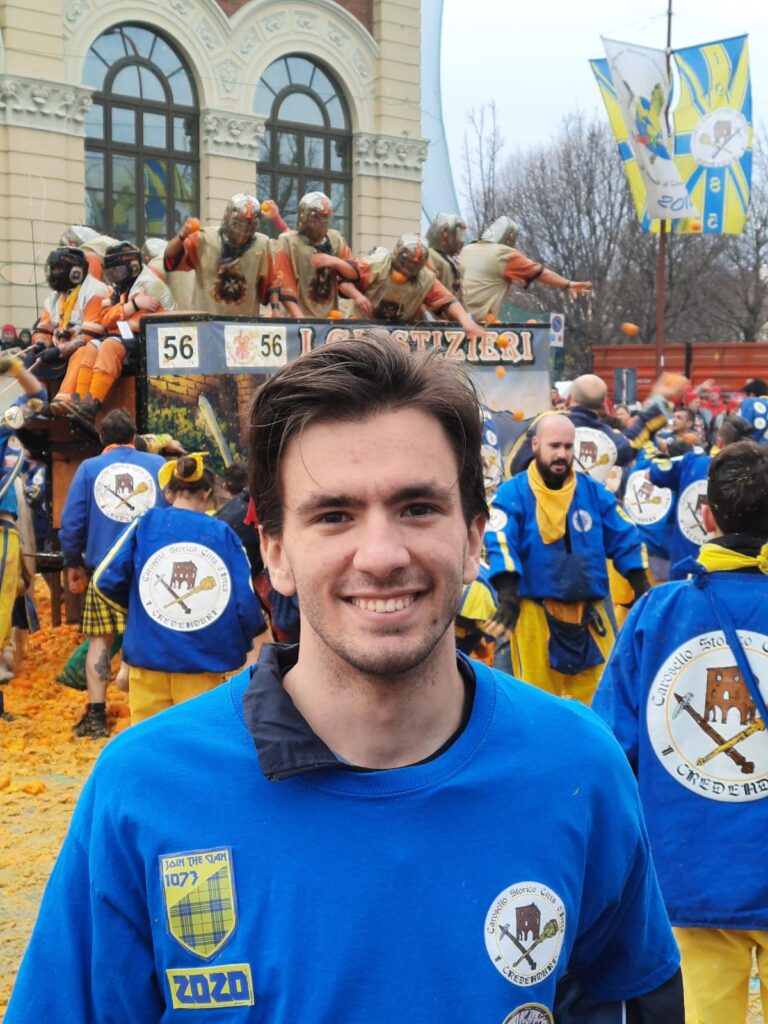
I am Guido, a volunteer for the Local Center of Ivrea’s Intercultura program since 2018. I am 22 years old. I have registered with the Credendari Aranceri since 2020 to accompany the foreign boys sponsored by our local center to photograph, despite the fact that I live close to Turin and the Carnival is not a part of my family’s history. As a result, it has gradually started to become a ritual for me as well. Throwing oranges is a truly unique experience that is well worth the effort.

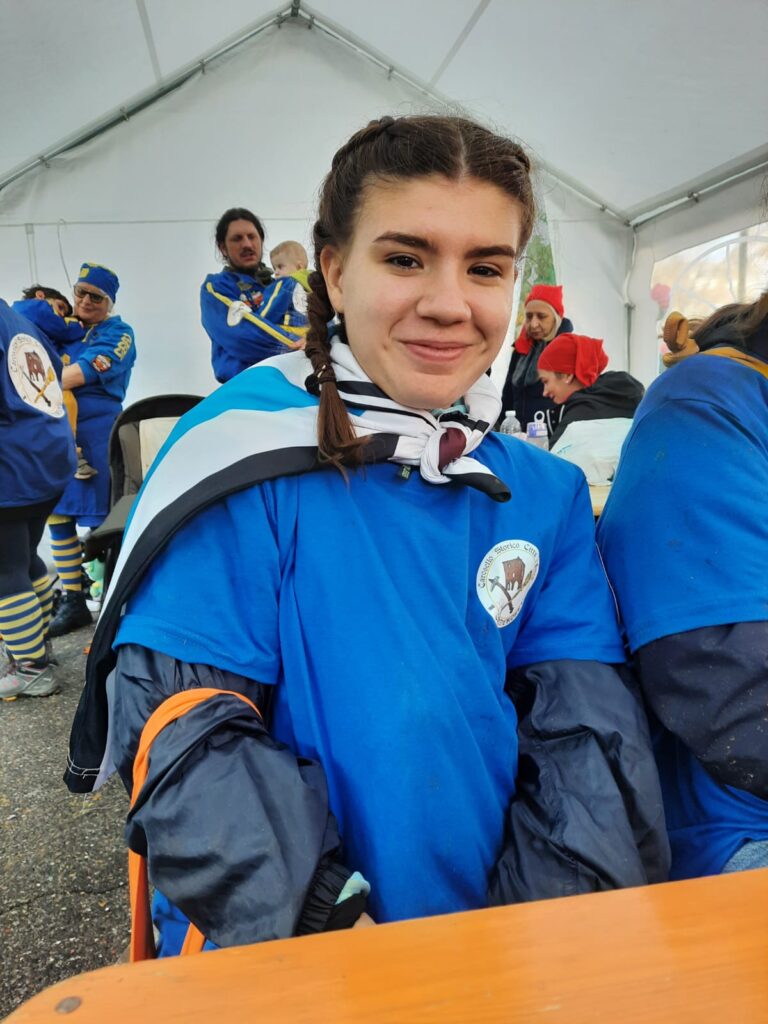
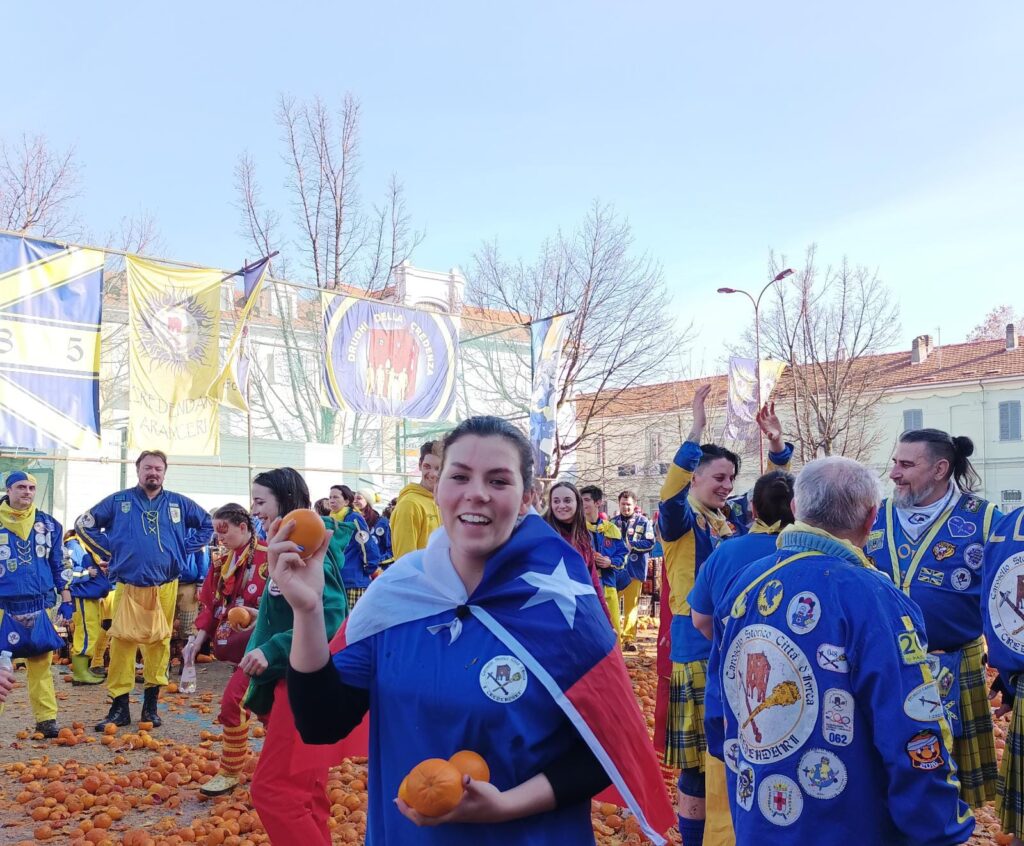
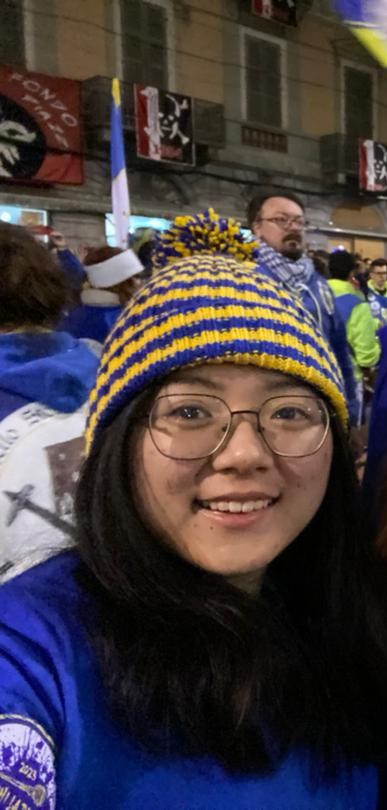
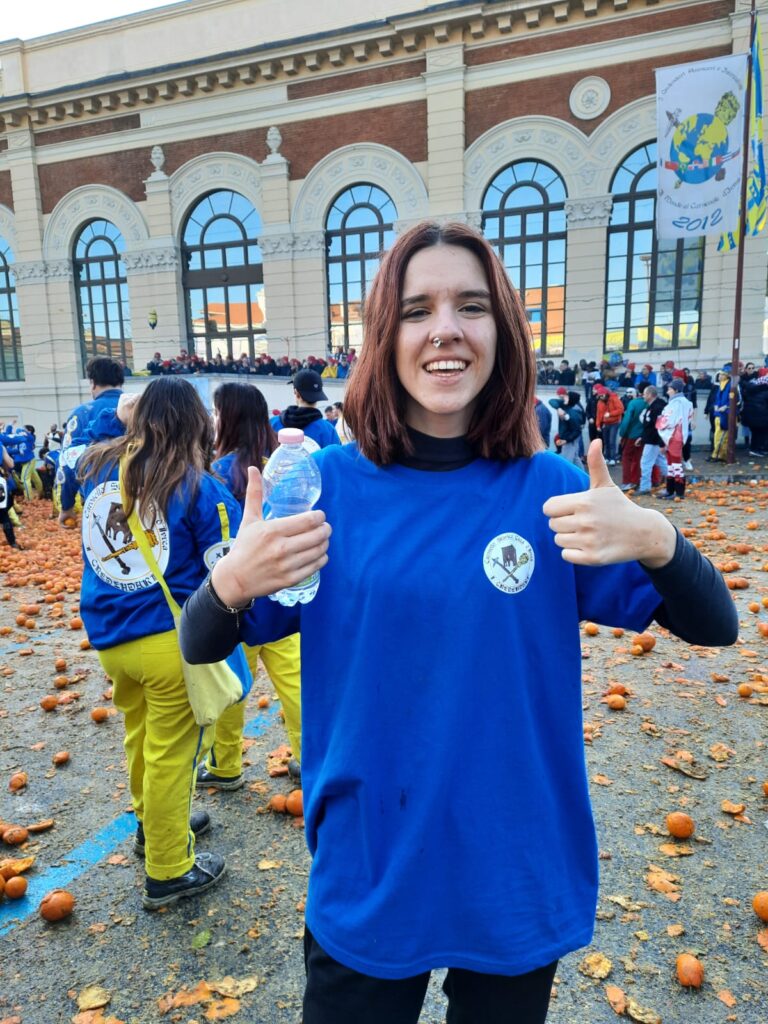
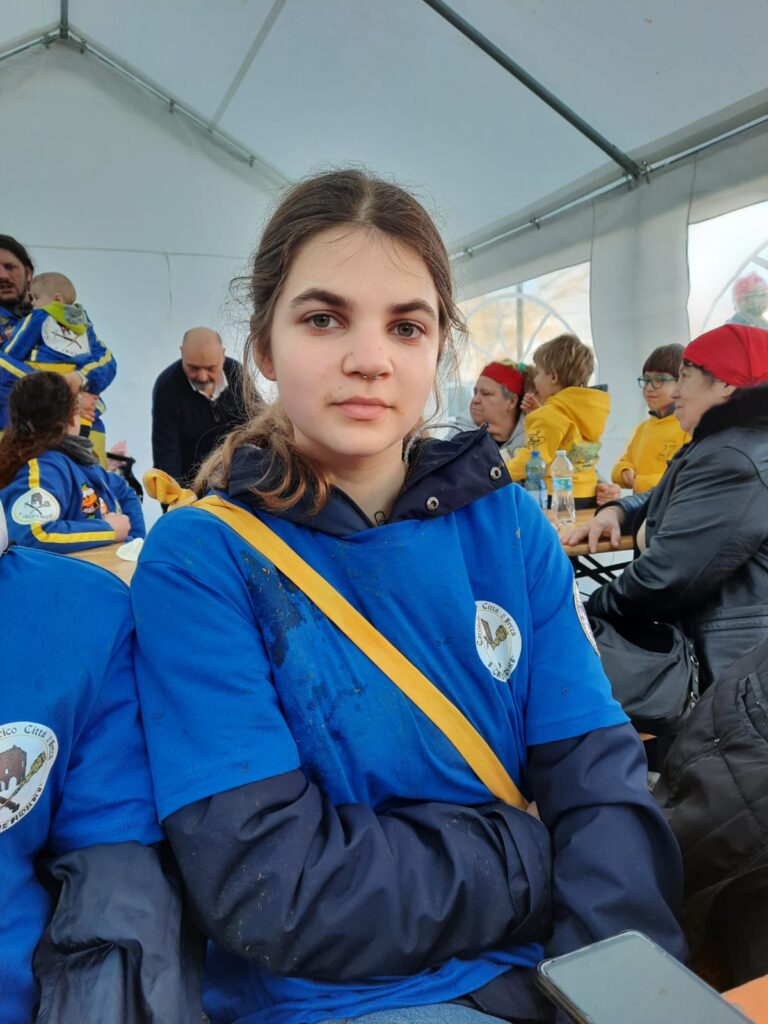
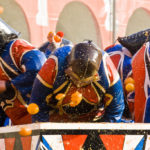
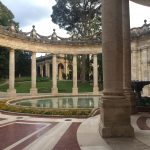
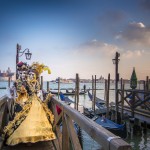
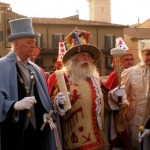
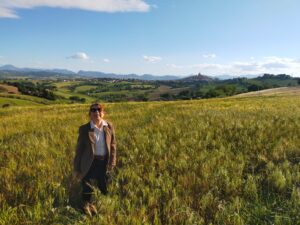
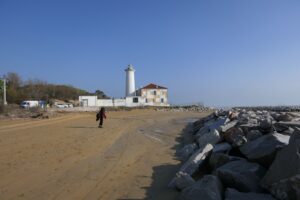
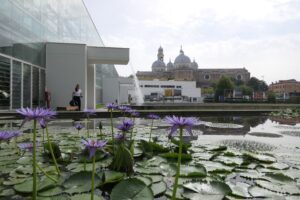







1 Comment
A world Battle of the Oranges – Where Next Honey
[…] Source link […]